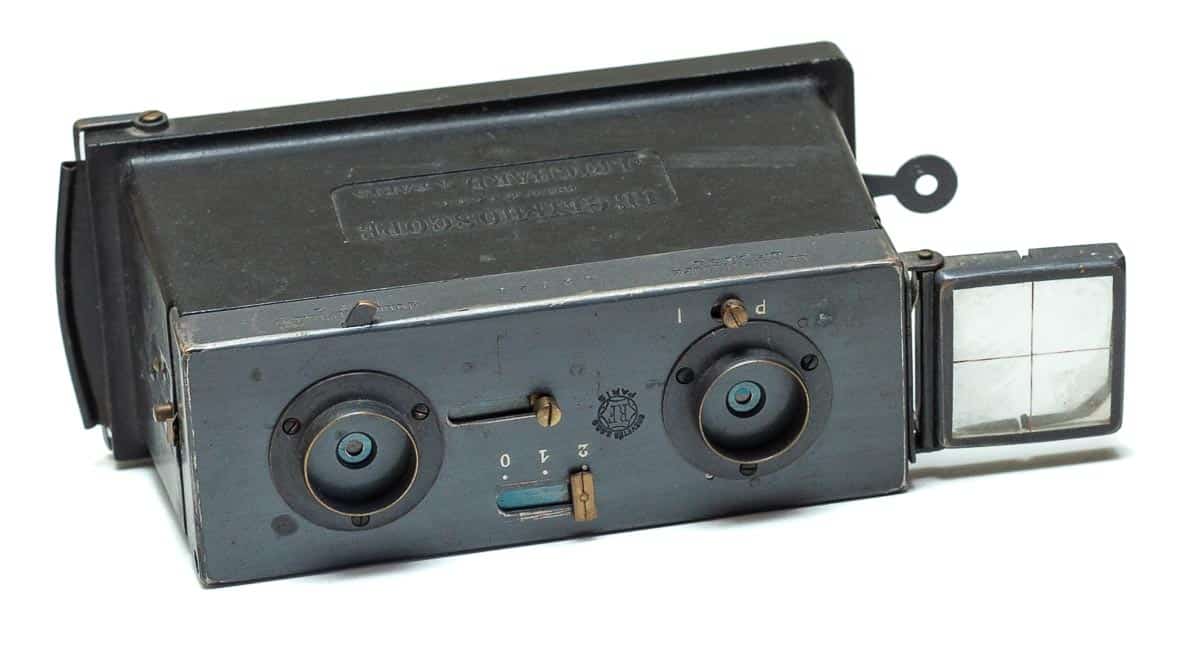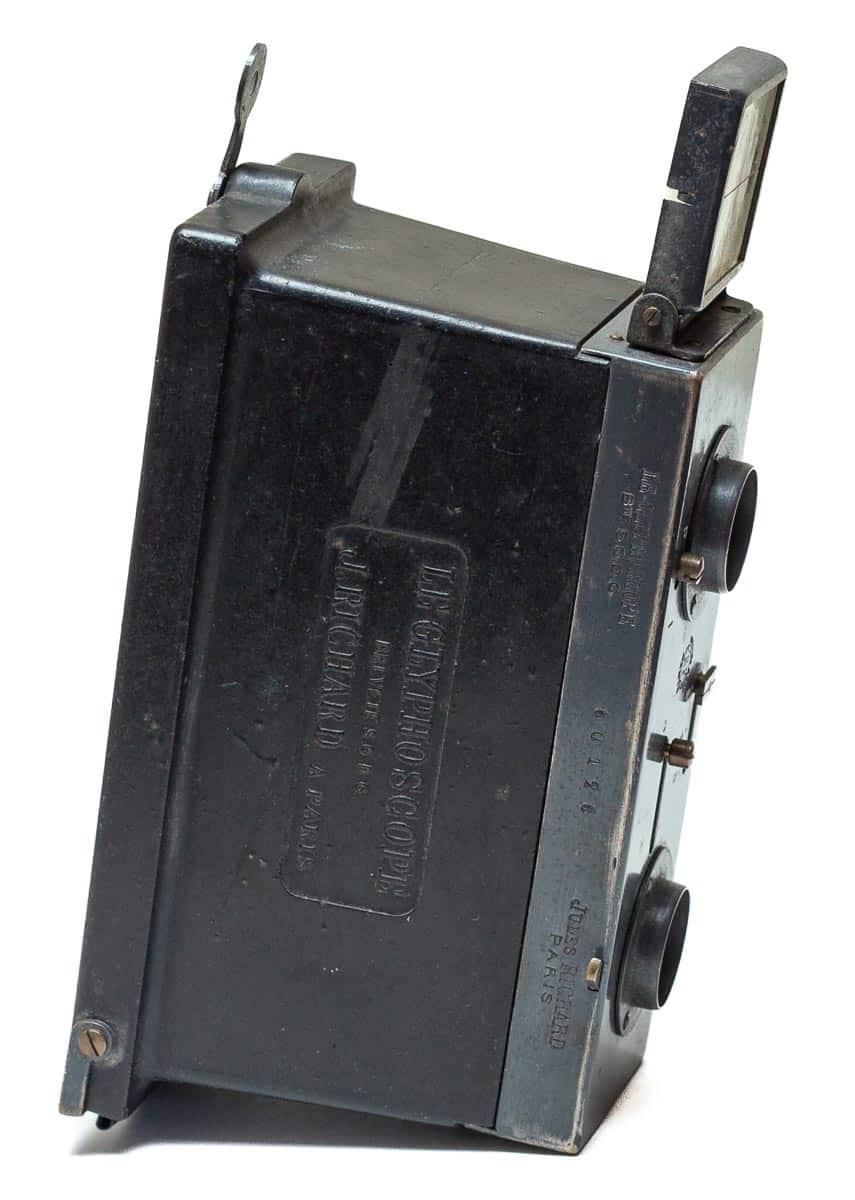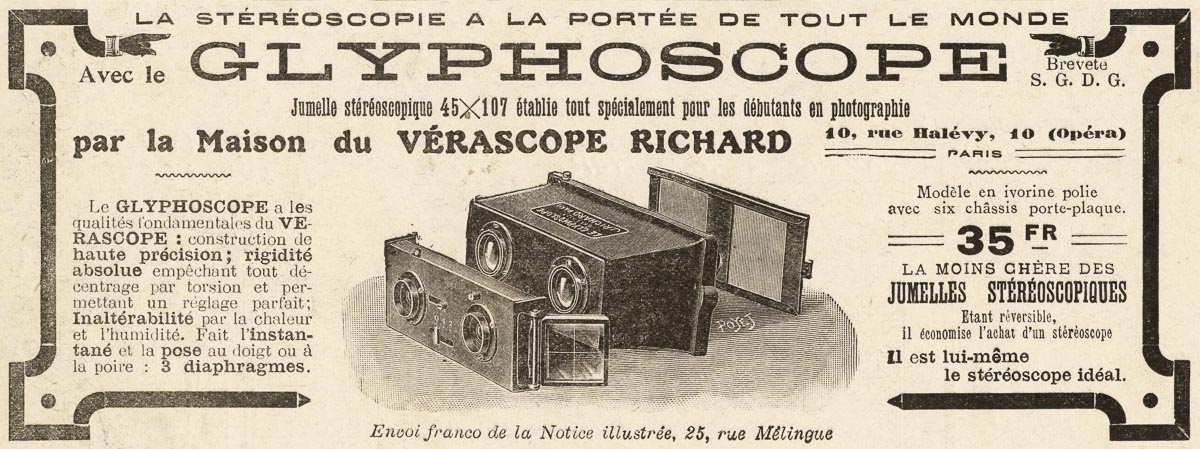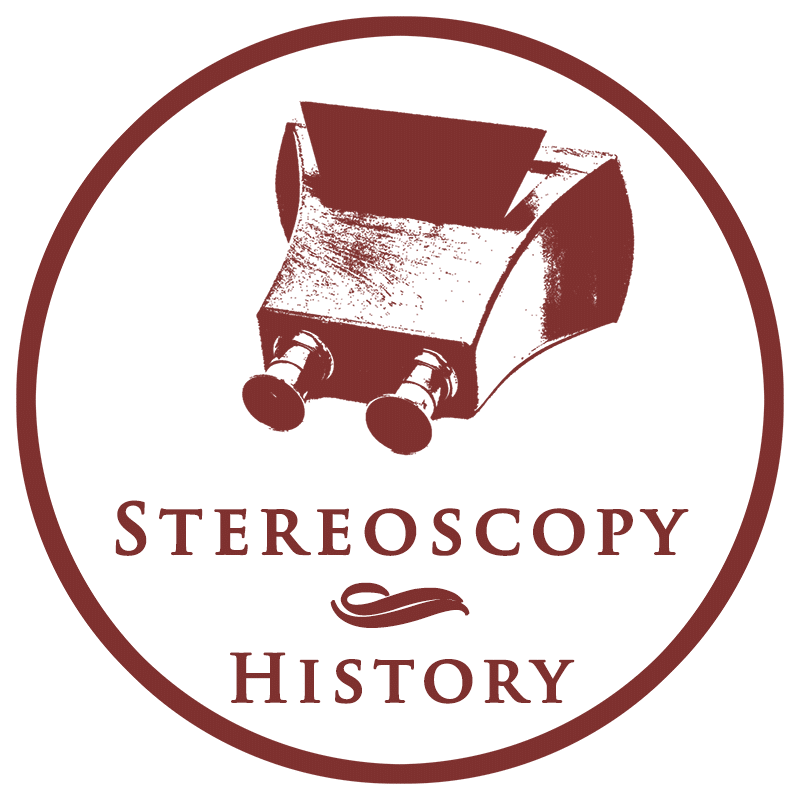
The Glyphoscope Modèle 2 is a compact and simple camera that can also serve as a stereoscope. Read more about the Glyphoscope and the different models in the Glyphoscope Modèle 1 post. Model 2 offers the same functionality as Model 1, but weighs 85 grams less and has a slightly different shape. It is remarkable that Jules Richard saw a market for a series of cameras that offered identical functionality and differed only minimally in weight and shape.


Specifications
| Manufacturer: | Jules Richard |
| Year of introduction: | 19051 |
| Year of manufacture: | 19232 |
| Type: | Stereo camera and stereoscope |
| Serial number: | 60126 |
| Negative type: | Glass |
| Negative format: | 45 x 107 mm |
| Lens: | Two 54 mm achromatic lenses |
| Serial number lens: | None |
| Lens aperture: | Three lens apertures |
| Focus: | Fixed focus |
| Shutter: | Guillotine shutter with settings P and I |
| Dimensions (L x W x H): | 13.5 x 8 x 6.5 cm |
| Construction: | Metal |
Jules Richard
Félix Richard (1809–1876) established in 1845 a company that was specialised in the manufacturing of barometers. Jules Richard (1948–1930) took over the management of his father’s company in 1876, and patented in 1880 the first reliable barometer that could permanently record air pressure. The barometer became very successful, and the company at 25, Rue Mélingue in Paris started to grow. Richard introduced the compact 45 x 107 mm glass stereoview format and Vérascope stereo camera in 1893. It became a great success and the Vérascope became the best-selling stereo camera of its time. A product line was created around the new format, with a wide range of cameras, stereoscopes and accessories in different price ranges. The company became the leading brand of stereoscopy products and brought stereo photography within the range of amateurs. Their product names, such as Vérascope and Taxiphote, were commonly used as synonyms for stereo cameras and stereo viewers of all kinds.
The complete story of Jules Richard
